New Hampshire
6 Most Affordable Towns to Retire in New Hampshire
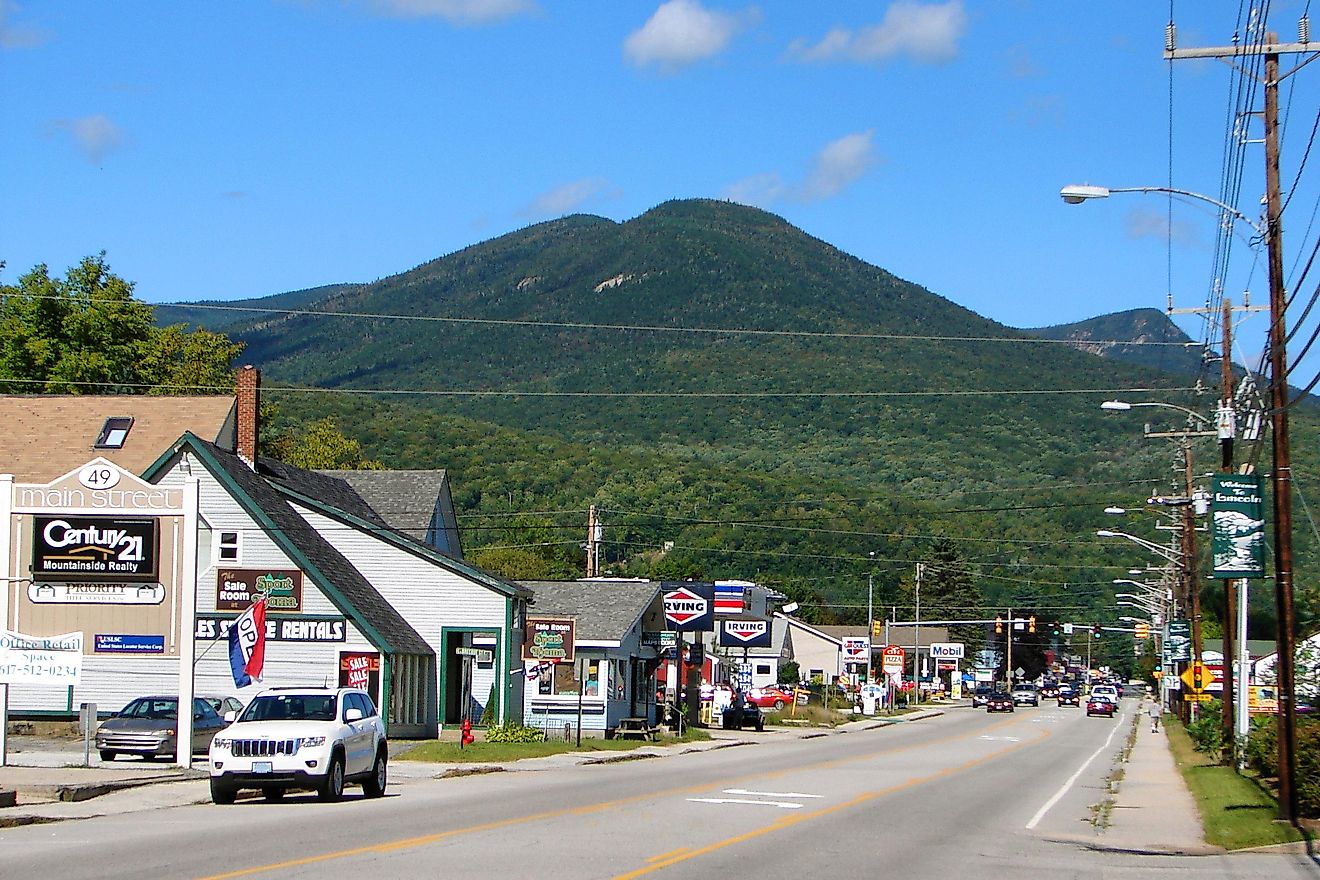
For years, New Hampshire has remained an opportune destination for those entering their golden years. With its natural beauty, low taxes, rich culture, and reasonable cost of living, the Granite State offers retirees an enviable lifestyle without breaking the bank. Several small locations across its modest territory prove to be the perfect setting for outgoing seniors. From mountain communities to seacoast villages, this beautiful New England state is home to charming hamlets where pensioners can stretch their savings.
Though many areas have witnessed rising real estate prices in recent years, some locales still present excellent value for money. If you are searching for an affordable yet highly livable place after calling time on your career, consider the following towns to retire in New Hampshire. Each allows residents to enjoy scenic outdoor recreation, small-town charm, and cultural activities on a modest fixed income.
Woodstock
Woodstock is a densely forested town with a population of less than 1,500 residents. This means plenty of outdoor opportunities for retirees in idyllic nature areas. Some of the top spots for lovers of open spaces include the riverfront Cascade Park, where a serene and isolated environment allows you to enjoy quality alone time. A visit to the White Mountains Visitor Centers equips seniors with all the information they need for a wonderful adventure when immersing in Woodstock’s sprawling wilderness.
The quiet town center is home to a friendly mix of businesses that allow for cordial interactions with other members of the community. At Fadden’s General Store, seniors can meet happy faces and establish close friendships while shopping for all their household needs. Finally, a home median price of $207,500 puts Woodstock’s real estate value below the state average.
Whitefield
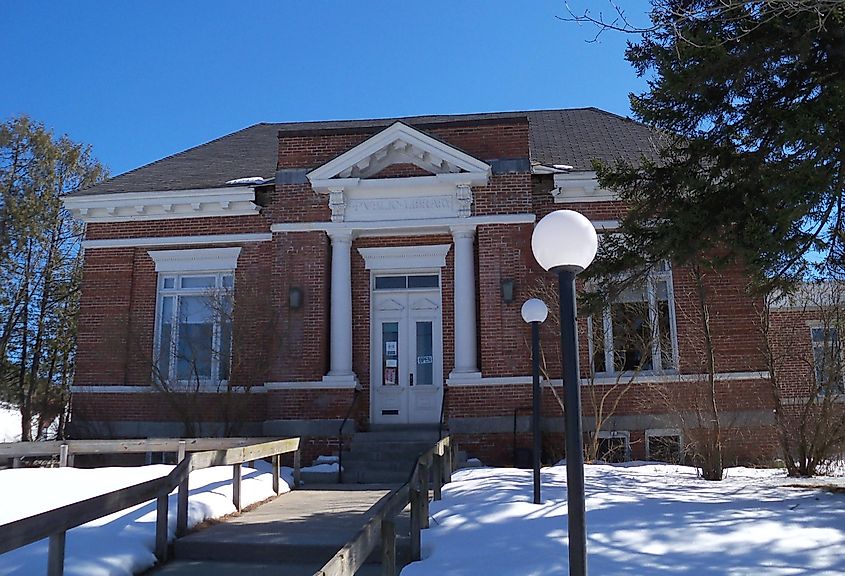
Another hidden gem in New Hampshire’s White Mountain region, Whitefield charms fresh pensioners with a stunning outdoor scenery, punctuated with lush forested surroundings and picturesque mountain views. This small community promises ardent outdoorsmen immersive adventures in sites like the Pondicherry Wildlife Refuge. Retirees can get lost in the great outdoors by taking advantage of wild hiking, camping, and animal-viewing adventures. However, one of the best ways to fully appreciate the sheer natural beauty surrounding Whitefield is to take an aerial tour with Vertical Ventures Aviation for a bird’s eye perspective of the town.
Away from the sprawling outdoors, the Weathervane Theater presents residents with the ultimate indoor alternative. This family-friendly venue stages entertaining stage performances, inviting the public to celebrate and support local arts. Furthermore, Whitefield is home to the Mount Washington Regional Airport, which makes it easy for retirees to travel to neighboring towns. Investing in a property in this town costs an average of $467,000.
Newport
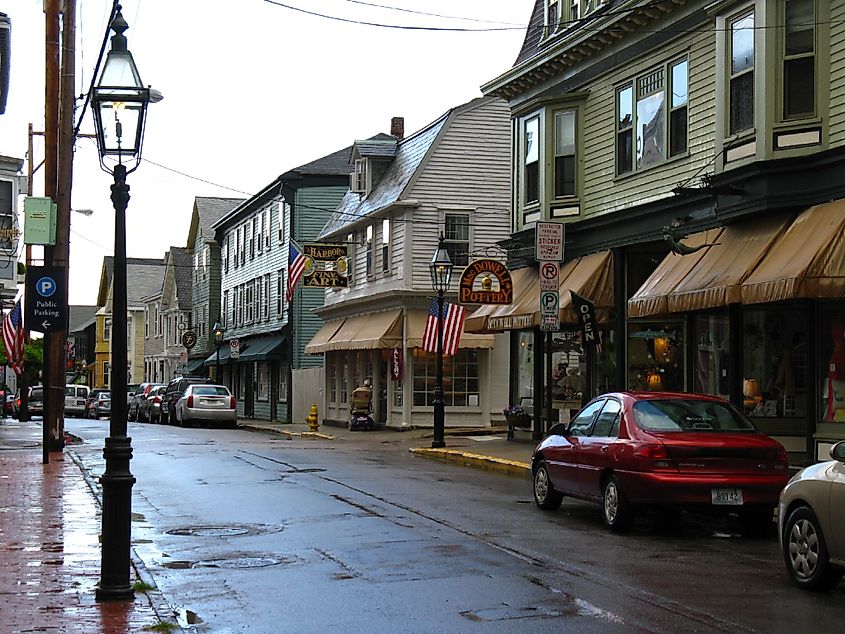
Known for being the hometown of Sarah Josepha Buell Hale, Newport charms fresh pensioners with idyllic natural surroundings, diverse recreational opportunities, and a vibrant cultural atmosphere. Outdoorsy retirees can choose from a selection of pursuits for quality time in the open spaces, including sightseeing and swimming at the breathtaking Pollard Mill Falls or a relaxed game of golf on the lush grounds of Newport Golf Club. The Corbin Covered Bridge is an interesting spot for history lovers in Newport. Straddling the Sugar River, the historic wooden structure offers a rare look at New England’s covered bridge architecture.
Elsewhere, the Newport Opera House is an excellent stop for culture vultures, bringing together locals to enjoy various performance art productions in a friendly social setting. Senior citizens do not have to leave town to find quality medical care thanks to the Newport Health Center, which has diligently served the community since 1873. Lastly, a home median selling value of $237,500, makes Newport one of the cheapest places to retire in New Hampshire.
Bethlehem
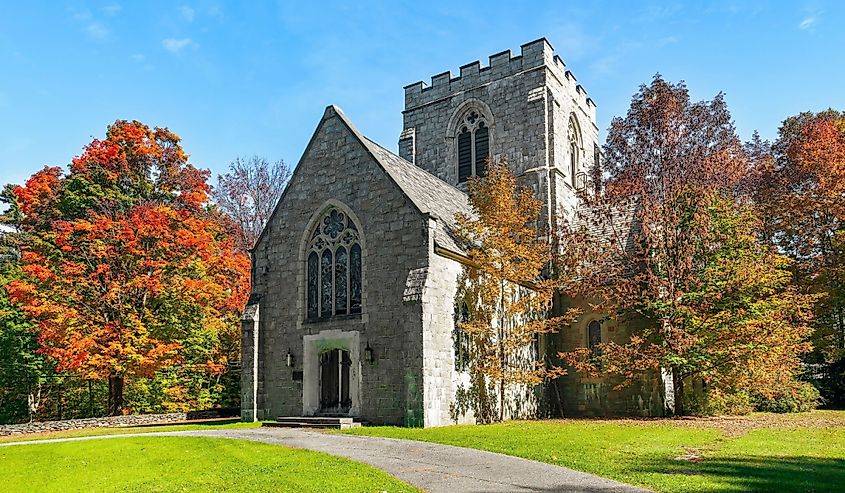
The quaint community of Bethlehem invites senior citizens to spend their retirement years in a laidback rural setting and among a friendly fold. It boasts beautiful natural landscapes, punctuated with the dense foliage of the Strawberry Hill and Cushman state forests, which also means endless adventures in the wild. Several golf courses, including the Maple Wood Golf Course, serve as an excellent way for seniors to explore the outdoors while having fun in a world-class venue.
Strolling through downtown, you will discover a vibrant corridor with a charming mix of businesses. Residents here conveniently shop for their groceries and household needs at the Bethlehem Village Store, whereas the Colonial Theater screens family-friendly movies in a rustic venue, which is among the country’s oldest operating movie theaters. Meanwhile, a tour of the Bethlehem Heritage Society provides an interesting look into the culture and history of the town. For aspiring homeowners, it takes around $405,000 to raise the local median home listing price.
Lincoln
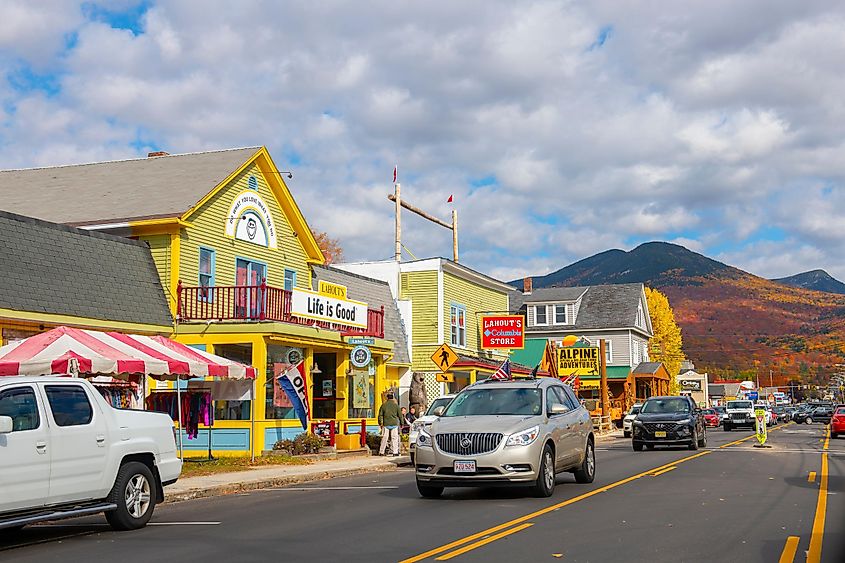
This picturesque alpine community in New Hampshire’s White Mountains spoils residents with year-round recreations curated for all seasons. Winter-loving retirees will be intrigued by SledVentures Snowmobile Rentals, which organizes exciting guided excursions into the snow-covered wilderness for friends and families. On warmer days, Franconia Notch State Park serves as the major hub for outdoor enthusiasts, offering endless opportunities for hiking, mountain biking, swimming, canoeing, and more. The park is especially irresistible in the fall when the changing leaves transform it into a magical scenery.
Back in town, a bustling restaurant and bar scene ensures seniors have a selection of hangouts where they can meet peers and socialize over a cold beer or a warm plate. Black Mountain Burger Co. stands out for its laid-back vibe and friendly employees. A couple of health facilities in the town, including Mid-state Health Center, provide crucial services to ensure retirees are always in their best physical form. Finally, the local median housing value is a price-friendly $449,900.
Ossipee
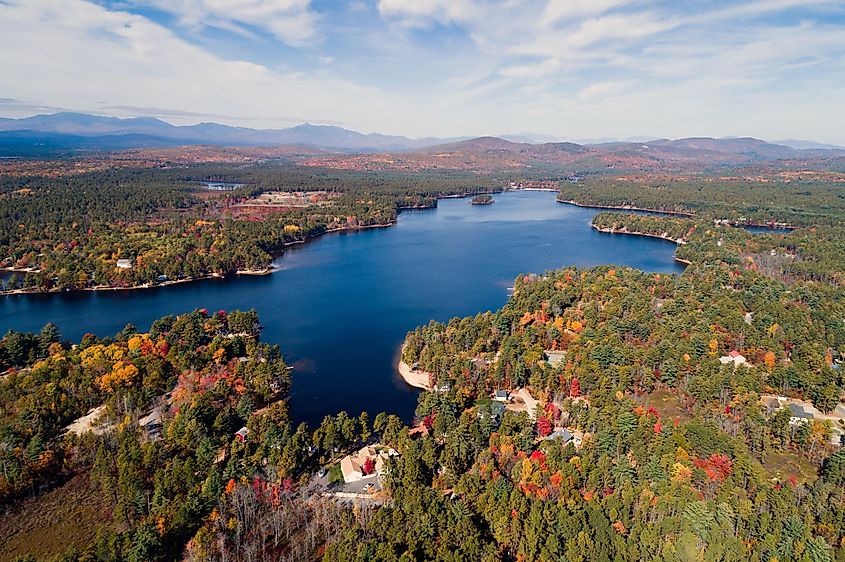
There is a unique charm about lakeside communities like Ossipee that makes them a choice destination for retirement living. They have a relaxed setting with breathtaking water views, best exemplified by the beautiful shores of Ossipee Lake. Senior citizens can spend quality alone time meditating in the gentle lake breeze or take advantage of various aquatic recreations, ranging from fishing and boating to paddleboarding. Away from the water, Constitution Park provides essential public amenities that encourage physical activity among seniors, such as ball fields, tennis courts, and a dog park.
Meanwhile, those with a taste for collecting antique treasures can explore unique finds at White Mtns Antique Gallery & Estate Services for their indoor pursuits. The local community makes a commendable effort to care for its senior citizens with several assisted living communities, including Ossipee Concerned Citizens. For pensioners planning to stay in their own homes upon settling in Ossipee, the average property value here is $417,500.
Final Thought
Whether you are looking for a small-town New England charm with rich cultural attractions or scenic outdoor recreation amid rural surroundings, these towns deliver highly livable environments to retire in New Hampshire on a budget. Their combination of natural beauty, cultural amenities, healthcare resources, and reasonable costs of living make them top choices for those hoping to stretch their fixed incomes in a place with excellent quality of life. It is easy to see why the Granite State continues to be a prime yet low-cost destination to enjoy scenic vistas, community ties, and all the joys of active retirement.

New Hampshire
The Whole Family Could Spend An Entire Day Having A Blast At Muddy Paw Sled Dog Kennel In New Hampshire
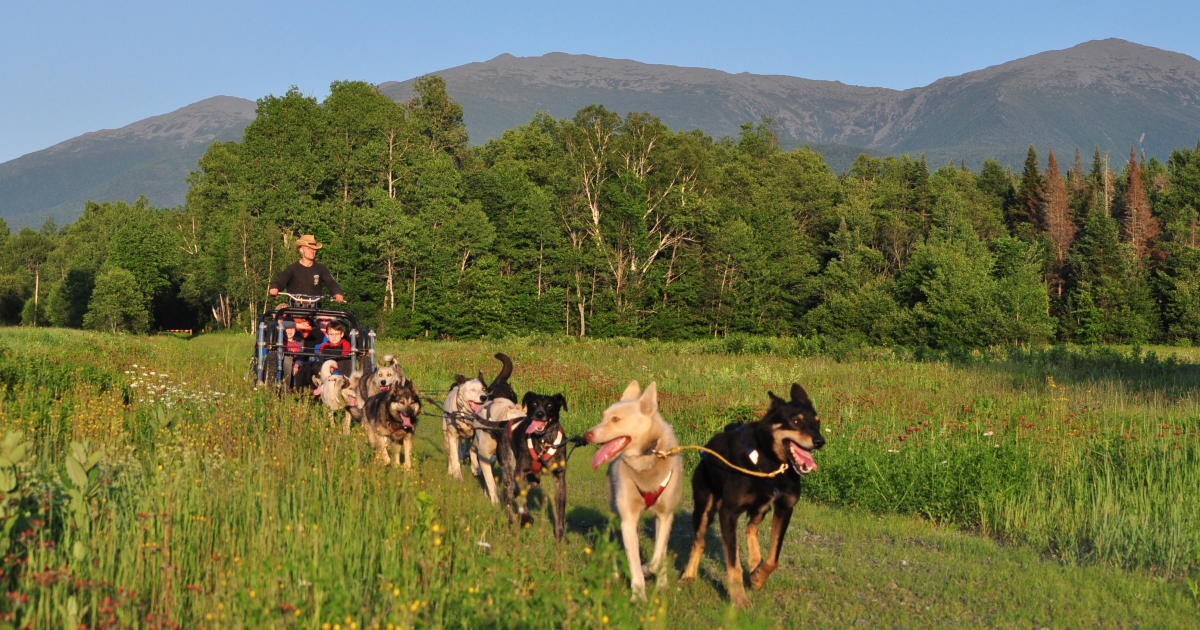
When you think of winter activities in New Hampshire, the first ones that come to mind are probably snowshoeing, skiing, and snowmobiling. But there’s one more that you may not be familiar with and that’s sled dogs! This winter activity has an additional bonus though; it’s not limited to just winter. How is that possible? Well, read on to learn more about this family-friendly activity in New Hampshire that isn’t limited to just one season. Let’s take a ride with Muddy Paw Sled Dog Kennel in Jefferson.
If this isn’t an unusual and unique family-friendly activity in New Hampshire, I don’t know what is. To find out more and to book your visit, visit the Muddy Paw Sled Dog Kennel website, and be sure to follow Muddy Paw & Raft NH on Facebook for the latest updates and news.
For a double dose of family fun, here is a two-part outing that can be enjoyed all in one day! And make sure you have enough road snacks to keep everyone happy and full of energy for the day’s adventures.
There Are Caves Near A Nature Center In New Hampshire, Making For A Fun-Filled Family Outing
OnlyInYourState may earn compensation through affiliate links in this article. As an Amazon Associate, we earn from qualifying purchases.
Featured Addresses
Muddy Paw Sled Dog Kennel, 32 Valley Rd, Jefferson, NH 03583, USA
New Hampshire
A Chance Of Showers’ All Week Long In New Hampshire — But Fun Stuff To Do

CONCORD, NH — Weather forecasters are warning of “a chance of showers” or “showers likely” for most of the week in the Granite State.
On Monday, expect patchy fog in some areas of the state, with mostly sunny skies and temperatures in the low 50s to upper 60s. Overnight, there is a 30 percent “chance of showers,” according to the National Weather Service.
On Tuesday, another 30 percent “chance of showers,” mainly after 2 p.m., but otherwise sunny, with highs in the upper 70s. Wind gusts could reach 20 mph. Showers are “likely” after 8 p.m. with temps in the mid-50s.
The rain is expected to “likely” continue into Wednesday day and evening with temps in the lower 50s and upper 60s.
Another “chance of showers” is expected on Thursday morning and early afternoon before becoming partly sunny with temps between the upper 40s and the upper 60s.
Partly sunny skies are expected on Friday, but there is a “chance of showers” on Saturday and Sunday.
The latest weather conditions can be found on the front page of every Patch.com site in the United States, including the 14 New Hampshire Patch news and community websites covering Amherst, Bedford, Concord, Exeter, Hampton, Londonderry, Manchester, Merrimack, Milford, Nashua, North Hampton, Portsmouth, Salem, Windham, and Across NH. Local weather reports for New Hampshire are posted on Sundays and Thursdays. Alerts are published when needed.
New Hampshire
How removal of a Durham historical marker sparked debate about who gets to write history

Three hundred and thirty years ago, a group of English settlers and allied French and Wabanaki soldiers battled near the Oyster River, in what is now Durham, leaving about 100 settlers dead.
While those bare facts were first commemorated on a historical marker decades ago, the story behind the battle – including where the blame lies, what led to the conflict, and which group suffered more – is still up for debate as Durham residents have been working to erect what they hope will be a more accurate marker describing the deadliest event in the town’s history.
A committee of residents and representatives from several local and state agencies have spent months in lengthy roundtable discussions, struggling to agree on the words to best describe this colonial-era conflict. The conversations became so contentious that town leaders brought in mediators to help find consensus.
“I don’t think at the end of this process that we are going to have resolved what happened in 1694,” said facilitator Barbara Will at a meeting earlier this year. “I think what we’ll find at the end of this process is that we have come together as a community to give our best interpretation of what happened and the context within which it happened.”
Now, the story of what came to be known as the “Oyster River Massacre” has the chance to be presented in a new way – as long as it can be encapsulated into just a few dozen words while also touching on issues of Indigenous identity, historical memory and the legacy of colonialism.
An abrupt removal sparks debate
The current debate over how to properly commemorate the battle began in 2021, when the state of New Hampshire removed the historical marker that had stood near Durham’s town hall for decades.
In a revision form filed with the New Hampshire Division of Historical Resources, members of the state’s Commission on Native American Affairs had flagged the sign’s language as problematic and suggested revising it.
The original historical marker described the battle as an attack in which a French soldier led 250 “Indians” in a “raid” on the English settlements in the area, “killing or capturing approximately 100 settlers, destroying five garrison houses and numerous dwellings.” It also described the event as “the most devastating French and Indian raid in New Hampshire during King William’s War,” a conflict between France and England over control of North American territories in which the Wabanki people allied with the French.
In a few short bullet points, the Native American Affairs Commission said the sign lacked context, called the language “insulting or derogatory” and asked: “Devastating for whom?”
The former director of the Durham Historical Association, who was not involved in the roundtable discussions, said the complaints outlined by the Commission on Native American Affairs were the only information the association was given as to why the sign was removed, and the only guidance they had for suggesting a revision. The form didn’t include any suggestions for what should be on the sign instead.
“We were always working in the dark, not knowing specifically what the issues with the original sign were,” David Strong said.
Contested identity
The Commission on Native American Affairs is composed of New Hampshire residents who are tasked with representing Indigenous people in the state. But the Indigenous identity of one member, who was a part of flagging the Oyster River marker for revision, is contested.
Denise Pouliot describes herself as the head female speaker of the Cowasuck Band of the Pennacook Abenaki People. She was also selected to participate in the roundtable discussions in Durham as a representative of the Indigenous community.
“My presence here is very simple,” Pouliot said in January. “I want to make sure that the Indigenous history of the past is included in these signs. These signs are primarily constructed of colonial perspectives.”
However, as a 2023 NHPR investigation found, there is no evidence to support Pouliot’s claim of Abenaki heritage, as leaders of the Odanak First Nation in Canada and scholars on Indigenous identity have said for years. Pouliot continues to assert that she does have Abenaki ancestry, although she declined to provide any family names or documentation to corroborate her claims.
During the roundtables in Durham, Pouliot insisted on using oral histories to recount the events of the massacre, and has claimed to personally know the history of that era.
“We were here first,” Pouliot said at a February meeting. “We were hunting and fishing and living in these locations and you came in and forced us out by gunpoint. And that’s the story that really should be told if you want to talk about really encompassing the true history of the region. But I don’t see a plaque for that anywhere, and I don’t see anywhere trying to fight for that level of truth.”
While none of the roundtable participants have publicly questioned Pouliot’s ancestry claims, Carolyn Singer of the Durham Historic District and Heritage Commission has stressed the importance of using primary and secondary sources when constructing the language for the sign, instead of a sole reliance on oral histories. She said the Heritage Commission had used primary sources in its draft, but that she had not seen evidence of documentation in iterations suggested by other groups, including that of the Commission on Native American Affairs.
“Language has already been suggested,” Singer said, referring to the draft from the Commission on Native American Affairs. “A narrative has already been suggested, so we should have a document to back up that narrative.”
Durham Town Administrator Todd Selig has a longstanding relationship with Pouliot and her husband, Paul Pouliot, who is also a co-speaker of her group. When asked about Denise Pouliot’s involvement in the process as a representative of the Indigenous community, despite a lack of evidence of her connection to that community, Selig said he had no problem with her presence at the table. Selig said over the years, he’s valued the couple’s contributions to Durham.
“To the extent the Pouliots have been involved in Durham, it’s generally been helpful,” Selig said.
‘A deeper sense of history’
The roundtable panelists began with three versions of the text for the new marker suggested by different groups. The group debated each option until, eventually, they combined and whittled them down to one.
Panelist Steve Eames was there as a representative of the Durham Historical Association. He’s a historian who focused his research on warfare on the New England frontier in the 17th century. He saw problems with all three versions.
For example, Eames and others around the table debated what to call the event, which has for years been referred to as a “massacre.”
“One person’s ‘massacre’ is another person’s ‘successful attack,’” Eames said. “But if we’re trying to remember the trauma, we can’t leave out the trauma.”
Another sticking point was the theft of Wabanaki land by European settlers and colonization that precipitated the massacre. One draft included the phrase “questionable treaty” to describe the Treaty at Pemaquid, a 1693 peace and trade treaty between the English and the Indigenous tribes in the area.
“I mean, from a historian’s point of view, that treaty, as all the treaties were, were ‘questionable’ because you had a culture that had a written language dealing with a culture that had no written language,” Eames said.
Others countered, asking: For whom was the treaty “questionable” and what does that really mean?
Ideas continued to swirl about the specific language on the sign and perspectives it should include. The Durham Historic Association, which sponsored the original marker, was represented at the table by Janet Mackie, who suggested the voices of the early settlers of Durham be featured on the new sign.
“There are still people living in Durham today whose ancestors were massacred,” Mackie said in a mediated session, though no one claiming familial ties to those killed spoke at the meetings.
Nadine Miller represented the state’s Department of Transportation. She agreed at a January meeting that both Indigenous and settler perspectives should be featured.
“I would think in a town where I was living and I had young children, I would find a sign would be a really great educational opportunity for young children to go to and talk with their parents about,” Miller said. “And in my mind, for my child, I would want them to know both sides of a story.”
Selig, the Durham town administrator, watched the process from the start. He says final wording has been sent to the state for approval, and he’s glad the sign will be back up, though it is unclear how soon that will happen. He said he and many others consider the “Oyster River Massacre” a seminal moment in Durham’s history, an event that could have wiped Durham from the map in its infancy.
“Controversies like this offer an opportunity to demand attention to an issue, to a topic. And while we have people’s attention, it helps to instill a deeper sense of history and appreciation for that history and the complexity of that history,” Selig said.
After the group’s last meeting in March, they agreed on a final version, one that was put together by the Durham Historical Association. It omitted the word “Indian,” named Wabanaki leaders who were there, and didn’t implicate them in the breaking of the peace treaty, rather that they were convinced to do so by the French. The title also no longer includes the word “massacre.” Instead, it was replaced by a dispatch sent to Boston after the attack: “Oyster River… is Layd Waste”
As the culmination of years of background conversations and more than six hours of facilitated debate over every word, the Durham Historical Association’s version was sent to the state Division of Historical Resources. Despite originally suggesting the community conversations, the state countered with its own version and turned it over to the panelists for review and sign-off. They’ll have to find consensus — again — before it’s sent to the foundry where the text will be cast in metal. If they don’t, the state can move forward with its own version, just as they would’ve if the conversations hadn’t happened at all.
Much of the debate was about what really happened in 1694, and — most of all — why such violence felt warranted. But for some, if the picture of that early morning at Oyster River isn’t captured in full, the sign isn’t worth being there at all.
“If the final decision is to write a sign or to finalize a sign that’s not based on the facts, then I hope the sign never goes back up,” David Strong said.
These articles are being shared by partners in the Granite State News Collaborative. For more information, visit collaborativenh.org.
-

 World1 week ago
World1 week agoBrussels, my love? Champage cracked open to celebrate the Big Bang
-

 Politics1 week ago
Politics1 week agoAustralian lawmakers send letter urging Biden to drop case against Julian Assange on World Press Freedom Day
-
News1 week ago
A group of Republicans has united to defend the legitimacy of US elections and those who run them
-

 Politics1 week ago
Politics1 week agoHouse Dems seeking re-election seemingly reverse course, call on Biden to 'bring order to the southern border'
-

 World1 week ago
World1 week ago‘It’s going to be worse’: Brazil braces for more pain amid record flooding
-

 Education1 week ago
Education1 week agoHow Counterprotesters at U.C.L.A. Provoked Violence, Unchecked for Hours
-

 Politics1 week ago
Politics1 week ago'Stop the invasion': Migrant flights in battleground state ignite bipartisan backlash from lawmakers
-

 Politics1 week ago
Politics1 week agoDemocratic Texas Rep. Henry Cuellar indicted by DOJ on conspiracy and bribery charges













